No matter where you live, there’s a good chance there is a crow nearby. What you might not notice is the family drama going on all around you. Many crows, especially during nesting season, live in family groups.
Mated pairs share territories with their grown children. The older offspring in turn help their parents with raising each season’s new brood of young birds.
This type of family life may not happen among all crow species or in all places. For example, in North America, we know that American crows and Northwestern crows cooperatively breed, but there is no evidence yet that fish crows pursue this lifestyle.
Lawrence Kilham was among the first to describe cooperative nesting in American crows in the early 1980s. Kilham was an avocational ornithologist, starting his studies in middle age amidst a career as a virologist. His approach to studying bird behavior was intentionally simple – observe individual behavior as much as possible.
For his crow studies, he worked seven days a week from a lawn chair with a notebook and binoculars. He lucked into finding a tame population of crows in Florida that were regularly fed by the owner of a private ranch. He was able to sort out individual crows based on their behavior and plumage idiosyncrasies.
Using this approach, Kilham completed a series of studies on crows and ravens that are summarized in his book The American Crow and Common Raven. Ultimately Kilham published more than 90 scientific articles that yielded many new insights into bird behavior.
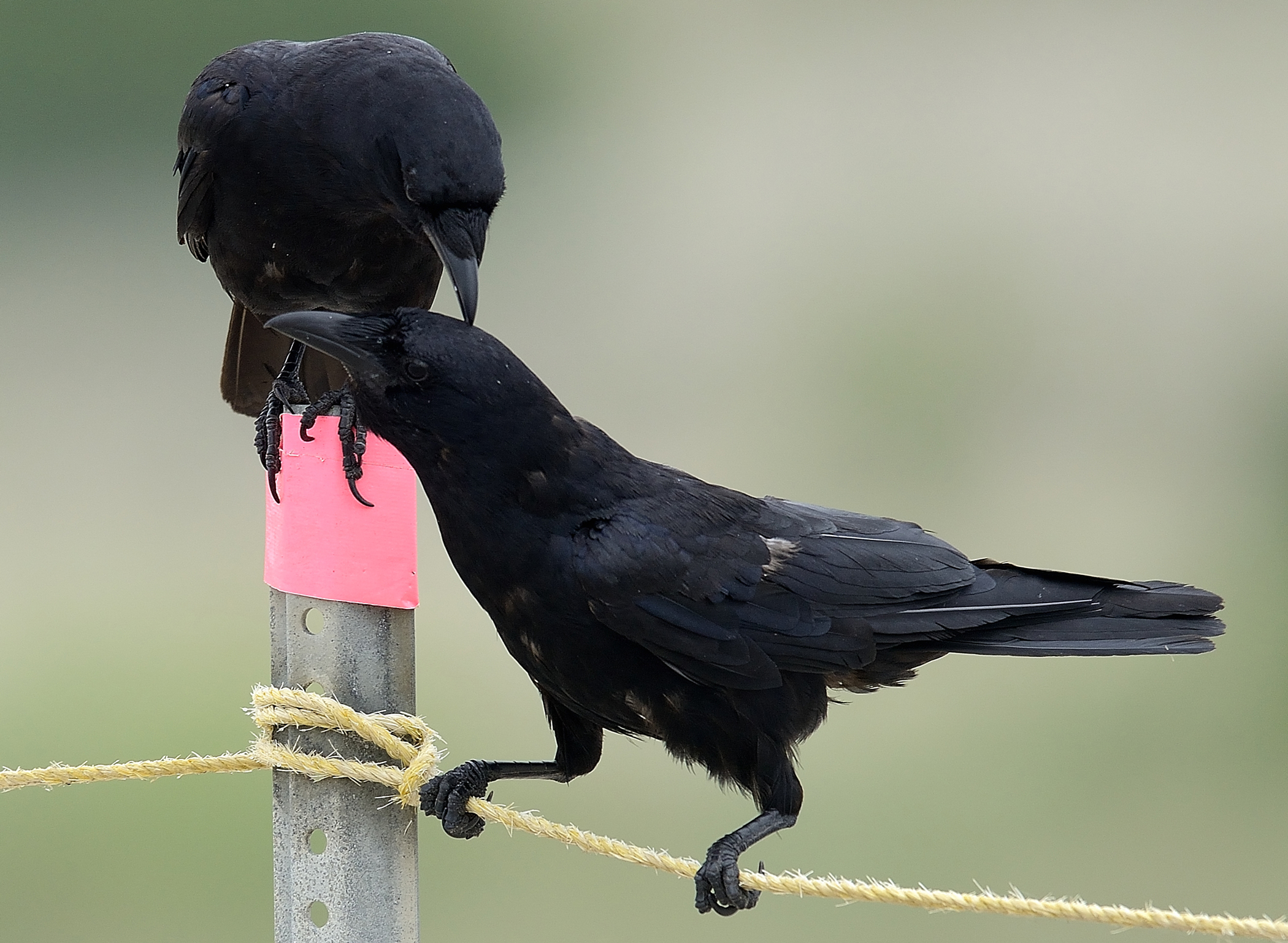
As observed by Kilham, the Florida ranch crows worked cooperatively on all parts of the nesting process.
Helpers would bring sticks and other nesting material to help the female build the nest. At one nest there were five helper crows busily bringing sticks “faster than the one female could handle them.” The project quickly became a disorganized mess.
Eventually, the female somehow communicated that it was time to halt stick deliveries. It took her an additional two weeks to finally complete the nest with the materials on hand.
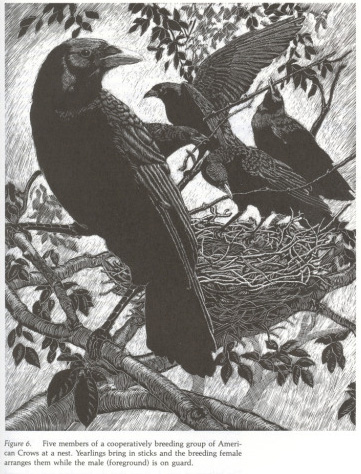
Kilham concluded, “There is a limit, conceivably, to the number of adult auxiliaries that can be of help rather than a hindrance.” In other words, too many cooks in the kitchen … Yes, crows have this problem, too.
Throughout the incubation period, the female spends 90% of her time incubating. She is fed by her mate and the rest of the helpers a few times per hour.
Kilham noted that the visit rate of helpers at hatching time was very high, but they weren’t bringing any food. He noted that “it seems that many of the visits were made out of curiosity” and ”the female moved aside each time a helper came, giving it a chance to look at the young.”
From then on the real work began for the family, with parents and “helper crows” making more than 20 visits per hour to feed the nestlings. The young birds continued to be fed exclusively by older crows for at least two weeks after they left the nest.
Subsequent long-term crow studies in New York led by Kevin McGowan of Cornell showed that pairs, like those that Kilham had studied in Florida, had year-round territories with young that stayed with their parents for up to six years. No crow bred on its own until it was at least two years old. The biggest crow family they recorded was 15 birds.
Why do crows stay at home to help rather than go out on their own?
Our greatest insights into this question come from a research team working in Europe with carrion crows. They have executed a series of studies focused on determining where and when it is beneficial to be a helper.
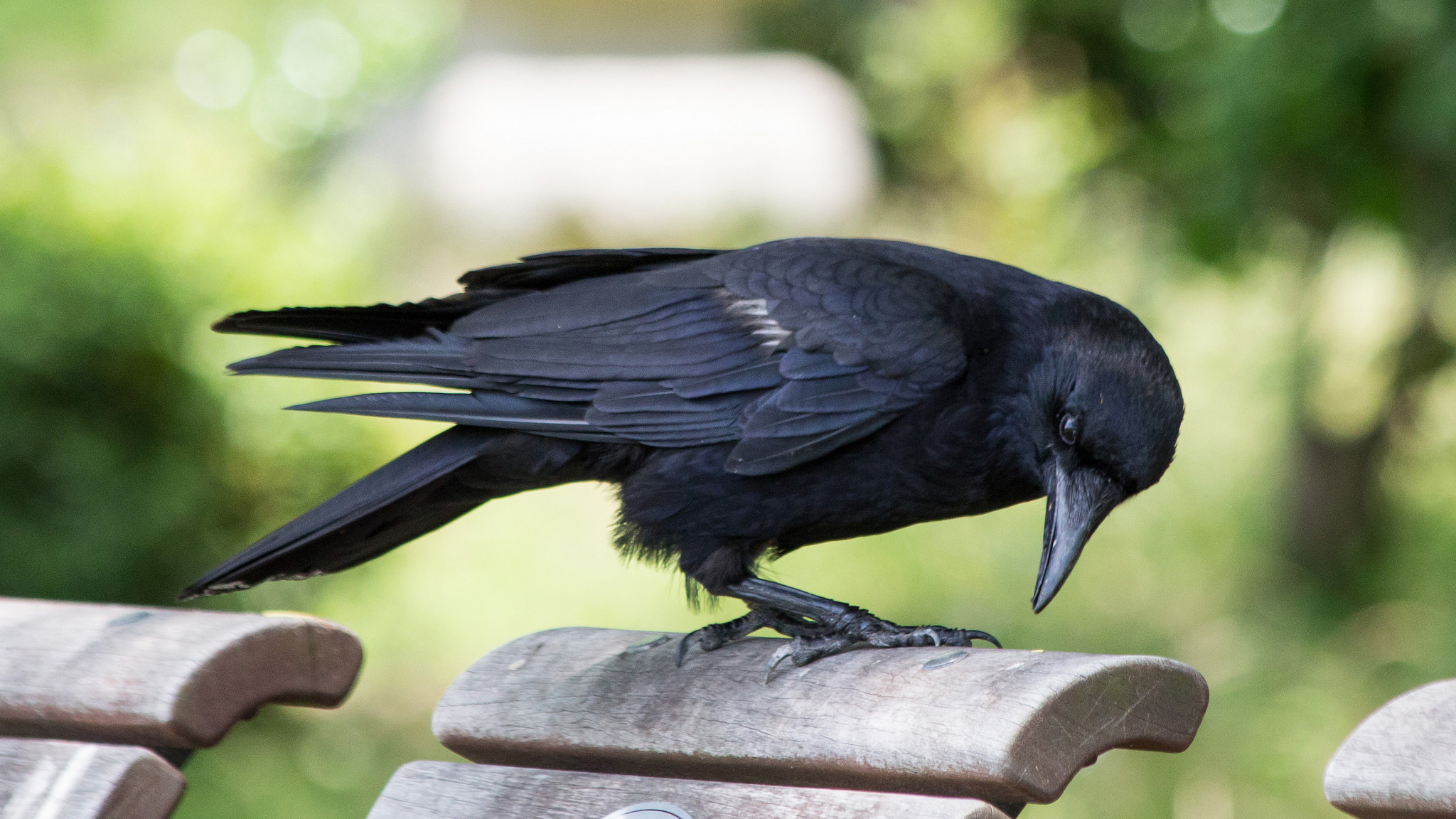
The team noted that in Switzerland cooperative breeding was rare, while in Spain it was common. To learn whether nature (genetics) or nurture (the environment) was driving cooperative nesting and family living, they experimented by moving Swiss crow eggs into Spanish crow nests.
The results? Nurture all the way.
The Swiss crows raised by Spanish parents adopted the local lifestyle of family living, while their brothers and sisters back in Switzerland left the home territory shortly after reaching independence.
The researchers presented two possible explanations for the difference between the two study sites.
The first hypothesis was that in Spain, there might not be enough territories to go around (in other words, it’s a tough job market), so the grown kids live at home for a while longer until something opens up.
Although the “tough job market” explanation is tempting, it turns out that Spain actually has more vacant territories available than Switzerland does.
The second hypothesis was that there may be a difference in food availability between the two sites that influences a territory’s capacity to support a family.
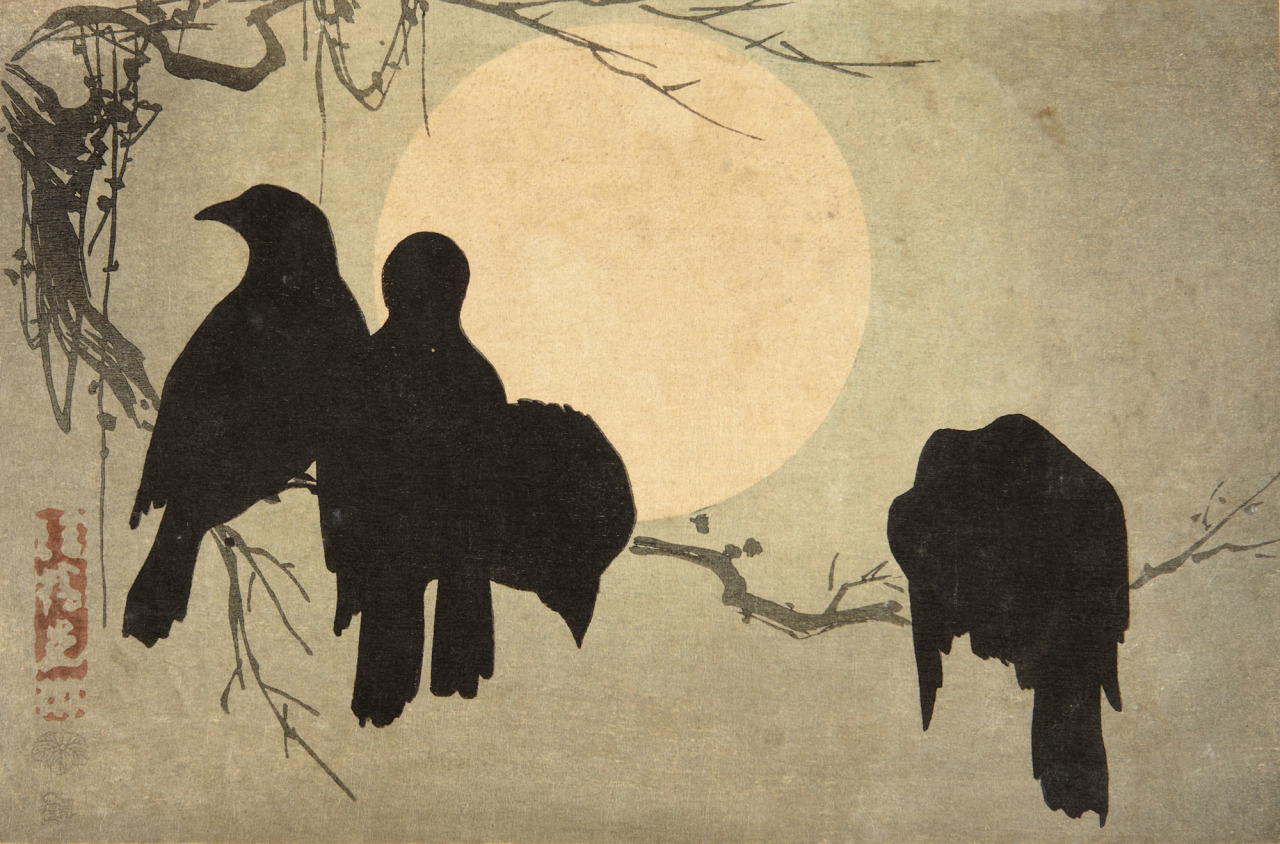
This hypothesis was proven to be correct. A key behavioral difference between Switzerland and Spain is that Spanish crows stay on territories year-round, while in Switzerland (and in an Italian study site), crows abandon their territories after nesting season. This is probably because they need to go beyond the territory boundaries to meet their food needs during the colder parts of the year. Families are then prompted to split up and, by the next spring, last year’s offspring are no longer around to help.
Even in Spain, where year-round territoriality is common, food availability is an important factor in determining whether the young stay or go. Experiments that added extra food to some territories demonstrated that last year’s young are more likely to stick around if there is more food.
Sticking around does imply a tradeoff. Surely all young crows aspire to have a place of their own some day. But in the meantime, a good part of their genes are being passed on by helping to raise their younger brothers and sisters. We would expect that their experience as helpers might make these young crows more successful breeders once they do get out on their own.
Cooperative breeding is common enough for us to know that it is beneficial under certain situations. About 40% of the 116 species in the crow family (including jays, magpies and nutcrackers) are cooperative breeders. It’s estimated that across all bird species, only about 9% are cooperative breeders.
Whether you’re referring to a crow couple or a human couple, it’s safe to say, it takes a village.
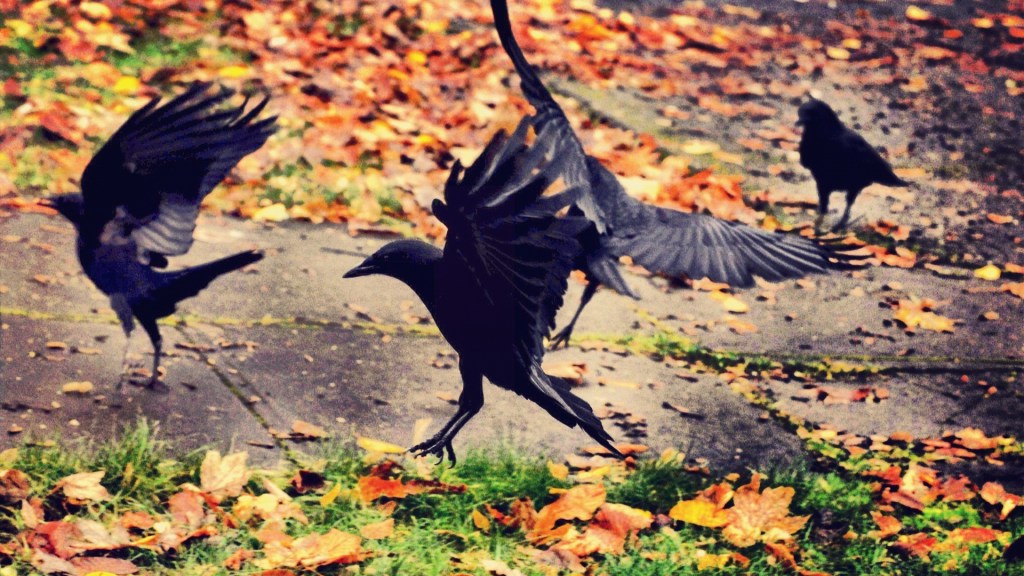



I am celebrating my 1st year anniversary of crow observation today. For the first time, a local couple of crows brought their young one to a feeding site I frequent, and it fed, evidently according to instruction or example, They do know me, recognize me, and aren’t terribly shy any longer, but the new one is only shortly out of the shell judging by size. Parents would feed, then stand back and watch the little one hop and bounce about feeding obviously quite energetic and frisky. I noted with interest that, just as adult crows will jump in the face of a feeding rival, they did so with the youngster. He seemed to understand, but kept going back to the food fray. Just like mom and dad.
These are amazing critters.
I would really like to learn more about crow calls and their meanings. I talk with a fish crow who comes by each morning (early), calls for breakfast which I then provide, and he’ll (she’ll?) caw back and forth with me, occasionally altering the call which I will mimic. This can go on for extended periods of time (whole minutes), and sometimes will continue even after I shut up. Earlier today, he flew down the street following my wife, whom he recognizes and who will sometimes caw back at him, landed on a wire and cawed at her. She thinks he was saying hi. I think he was saying food. Perhaps to a crow, it’s both.
The day before yesterday’s drama was… dramatic. I took video of an extended family of crows that has nested and bred in some tall pines nearby because they had been carrying on, loudly and aggressively, as a team dive bombing in magnificent swoops at a treetop. And this went on, no exaggeration, for nearly half an hour! I and bird friendly neighbors knew something was very amiss, coming outside curious to see what the concern was all about, and that’s when the predictable cause was revealed. A very large red tailed hawk burst out of the obstructing pine branches and rather cavalierly flew off with 3 wing-to-wing crows in hot and noisy pursuit. It was heartbreaking… all that time up there… that hawk must have devoured the entire family of their very recent young.
Would love to see more chatter here. I need info…
Unlike most people I know, I love to watch crows and see them as special as any there bird. There is a family of 3 at our new residence..2 parents and a juvenile. Sadly we have watched the parents try to take him across the road many times and it has been hit 3 times by cars, that I know of. I’ve rescued it off the road those times and monitored in a spare bird cage I have, and luckily the next day it’s parents are waiting in a tree out back, and I put him underneath for them to feed it…it still relies on them for food. It cries out a lot and gets picked on by other birds. Will it be okay or is it possible something has happened in those incidents? (After each hit, it will hop around the yard for a few days, then fly up to low branches, then eventually higher up.) This has been going on for the 7mths we’ve been here.
We have a Juvenile American Crow here and two weeks ago he had to be rescued by six other crows because a hawk was circling it. Of course the crows mobbed the hawk and everything turned out okay. Yesterday, the juvenile American Crow went to the same tree he had to be rescued from and cried and cried. Not one single crow came for him, why did he do this? There was no hawk. I can’t figure this out.
I live in Chouf mountain area of Lebanon close to CHOUF RESERVES .I am familiar with CROWS families and behavior . We have been neighbors and friends for 30 years or more ; The above Spain crows’ life style speaks of (my) crows hundred per cent. My crows recognize me well and sense whenever I leave them some food near the pine tree where they normally nest and gather.
Here in stuart fl a multitude of crows go from tree to tree . Is this a mating season for crows or some other behaviour
Hello , I have recently befriended a crow/ raven , an absolute beautiful bird. I live in Australia ( Rural Queensland) As I have been feeding it , it has become more tame by the day.
So much that it has bought its young one to feed . A very intelligent animal, it’s always watching me when outside. If I’m inside he/ her sits on my verandah railing . I have fallen in love with this bird and we do our best to communicate. Thankyou for your time.
I too love crows most people around me don’t and I just laugh as I find them so intelligent that is why I think so many people do not like them. Nice article. Thank you.
Crows are cute when they are baby’s
I live in a small country settlement where there is a family of crows I feed everyday. If they are not around when I go out I call good and loud for them and they come even though they may be way off in the distance. Sometimes I will even “caw” the gathering, come quickly one and it works. They are fascinating! One particular large bird ventures closest. I soak high quality dogfood or catfood overnight for them occasionally and also feed them peanuts in the shell, a clear favorite, and sometimes well cooked hamburg leftovers. It is amazing to watch them clean out a watermelon on a very hot day. I recently searched for and found a book on crows for my grandkids. I enjoy reading anything I can on these magnificent birds. I live in northern Nova Scotia. Some people say they migrate for the winter but does that mean they just go far enough to find a better food location? These crows seem to stay around but go to roost in late afternoon. There is a place where hundreds of them roost about five miles closer to town.
Last year a crow was obviously dying on our neighbors front lawn. Not sure if the crow was injured or sick but the eyes seemed cloudy and semi-shut leading me to believe it was a sick bird. The crow was slightly leaning to one side and both wings were spread out somewhat. Most remarkable was the presence of several other crows (about 5 or 6) in the trees above the sick bird making a fuss whenever a human got near the sick crow. It was heart breaking. We cleared the area and in a few hours the crow died and a neighbor removed it. The other crows left the area. I know little about crows but, based on what I saw, I’m sure this was a family group protecting the sick bird.
Never in my 70 years have I ever seen such large numbers of crows flocking together as right now in Akron, Ohio. I estimate in the realm of 3 to 4 hundred!
i like crows i want to learn more about them
If a crow loses a partner, and it seems the partner is lost and not dead would the remaining partner call for its mate?